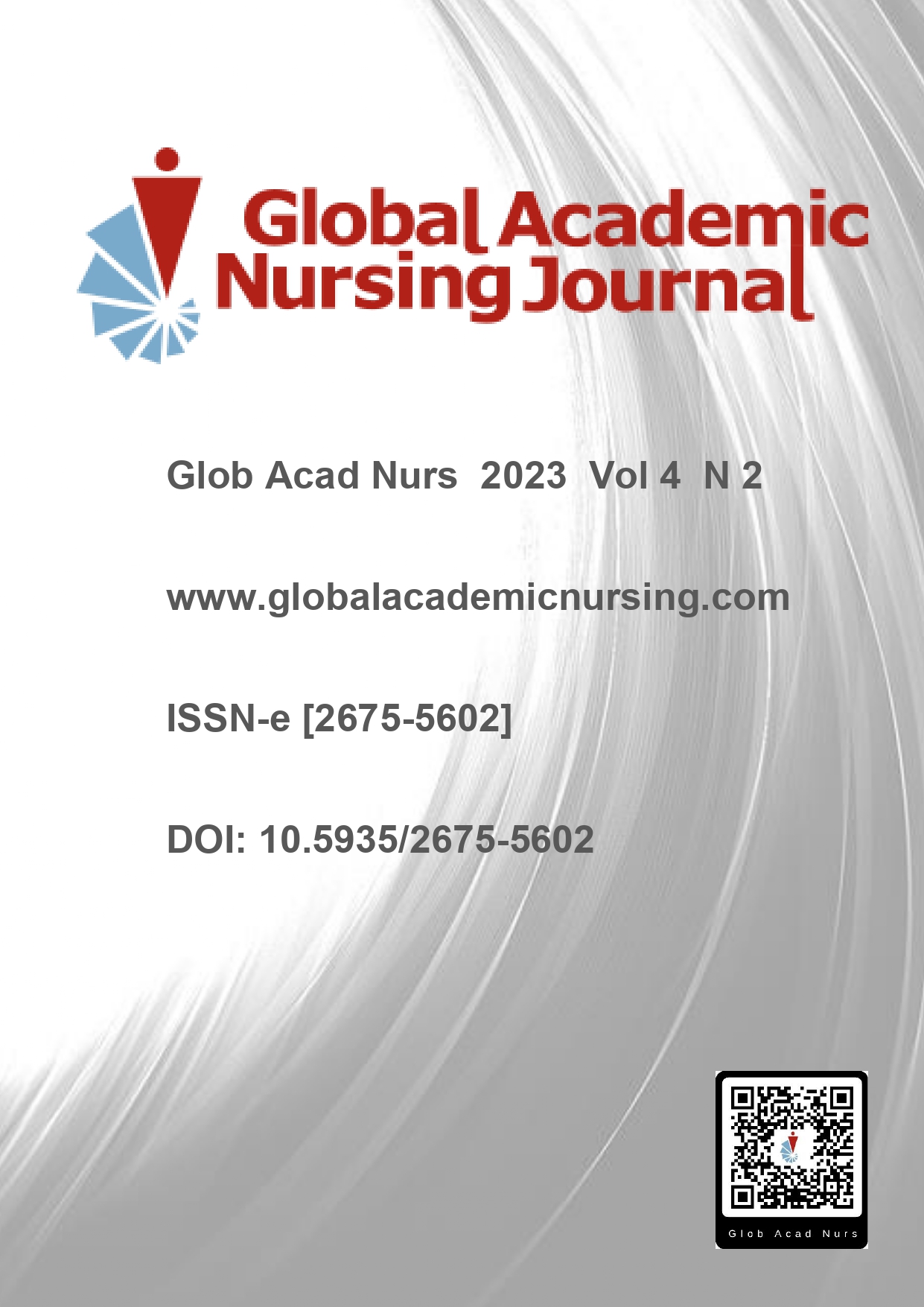Abstract
The aim was to identify the existing challenges, determinants, policies, and strategies to ensure the availability and accessibility of nursing personnel by the population in Brazil. Scoping review of peer-reviewed papers and technical and political documents. Eight scientific databases will be searched (such as PubMed, BVS, and EMBASE). Sources of unpublished studies/ grey literature to be searched include websites from the Ministry of Health, councils, and institutions. No language or publication date restrictions will apply. The review will consider documents that contain information regarding nursing personnel in the Brazilian context and address: I. the challenge of availability and/or accessibility of nursing personnel; II. the causes of the challenge; or III: strategies to deal with the challenge: either (a) in a state of description of implemented interventions or (b) evaluation of the strategy in its implementation stage. The result will be described in a narrative way, descriptive statistics will be presented as necessary, and the information will be grouped, summarized, and compared. For the qualitative analysis of the documents, both inductive and deductive thematic content analysis will be used. The results can reveal information about gaps and imbalances in the workforce, enabling the implementation of strategies to address these challenges.
References
World Health Organization (WHO). Global strategy on human resourcs for health: Workforce 2030 [Internet]. Geneva, Switzerland: World Health Organization; 2016 [cited on 21 Sep 2023]. Available from: https://apps.who.int/iris/bitstream/handle/10665/250368/9789241511131-eng.pdf
Oliveira APC, Ventura CAA, Silva FV, et al. State of nursing in Brazil. Rev Lat Am Enfermagem; 28. Epub ahead of print 2020. DOI: 10.1590/1518-8345.0000.3404
World Health Organization (WHO). State of the World’s Nursing 2020: investing in education, jobs and leadership [Internet]. Geneva, Switzerland: World Health Organization; 2020 [cited on 21 Sep 2023]. Available from: https://www.who.int/publications/i/item/9789240003279
United Nations Population Fund, International Confederation of Midwives, World Health Organization. The state of the world´s midwifery [Internet]. New York: United Nations Population Fund; 2021 [cited on 21 Sep 2023]; 80. Available from: https://www.unfpa.org/publications/sowmy-2021
Oliveira APC, Ventura CAA, Galante ML, et al. The Current State of Obstetric Nursing in Brazil. Rev Lat-Am Enferm; 29. Epub ahead of print 2021. DOI: 10.1590/1518-8345.0000.3510
Mendes M, Martins MS, Acordi I, et al. Força de trabalho de enfermagem: cenário e tendências. Rev Enferm da UFSM 2022;12:e11. DOI: 10.5902/2179769267928
Silva PFA, Shimizu HE, Sanchez MN, et al. Analysis of the distribution of the health workforce in Brazil. Res Soc Dev 2022;11:e37511830992. DOI: 10.1590/1413-81232020251.27572019
Machado MH, Koster I, Aguiar Filho W, et al. Mercado de trabalho e processos regulatórios – a Enfermagem no Brasil. Cien Saude Colet. 2020;25:101–112. DOI: 10.1590/1413-81232020251.27552019
Silva MCN, Machado MH. Challenges for the nursing in Brazil. Cien Saude Colet 2020;25: 7–13. DOI: 10.1590/1413-81232020251.27572019
Dumarde LT, Moreira FMSM, Bonela LZ, Dumarde CLS. A pandemia de COVID-19 e a saúde mental da categoria de enfermagem. Glob Acad Nurs. 2022;3(5):e334. https://dx.doi.org/10.5935/2675-5602.20200334
Oliveira BLCA, Silva AM, Carneiro AD. A distribuição de enfermeiros no Brasil segundo as pesquisas de assistência médico-sanitária (2002, 2005, 2009). Rev Gestão e Saúde [Internet]. 2015 [cited on 21 Sep 2023];6: 1334–1353. Available from: https://periodicos.unb.br/index.php/rgs/article/view/2919
Arksey H, O’Malley L. Scoping studies: towards a methodological framework. Int J Soc Res Methodol. 2005;8:19–32. DOI: 10.1080/1364557032000119616
Aromataris E, Munn Z. JBI Manual for Evidence Synthesis. JBI. Epub ahead of print 2020. DOI: 10.46658/JBIMES-20-01
Tricco AC, Lillie E, Zarin W, et al. PRISMA extension for scoping reviews (PRISMA-ScR): Checklist and explanation. Ann Intern Med 2018;169:467–473. DOI: 10.7326/M18-0850
Booth A, Noyes J, Flemming K, et al. Formulating questions to explore complex interventions within qualitative evidence synthesis. BMJ Glob Heal. 2019;4:e001107. DOI: 10.1136/bmjgh-2018-001107
Oliveira APC, Dussault G, Craveiro I. Challenges and strategies to improve the availability and geographic accessibility of physicians in Portugal. Hum Resour Health. 2017;15:24. DOI: 10.1186/s12960-017-0194-3
World Health Organization (WHO). Health labour market analysis guidebook [Internet]. Geneva: World Health Organization; 2021 [cited on 21 Sep 2023]. Available from: https://www.who.int/publications/i/item/9789240035546
Campbell J, Dussault G, Buchan J, et al. A universal truth: No health without a workforce. Forum Report, Third Global Forum on Human Resources for Health [Internet]. l. Geneva, Global Health Workforce Alliance and World Health Organization; 2013 [cited on 21 Sep 2023]. Available from: https://www.who.int/publications/m/item/hrh_universal_truth
Dubey S, Vasa J, Zadey S. Do health policies address the availability, accessibility, acceptability, and quality of human resources for health? Analysis over three decades of National Health Policy of India. Hum Resour Heal. 2021;19:139. DOI: 10.1186/s12960-021-00681-1
Ouzzani M, Hammady H, Fedorowicz Z, et al. Rayyan—a web and mobile app for systematic reviews. Syst Rev. 2016;5:210. DOI: 10.1186/s13643-016-0384-4
Page MJ, McKenzie JE, Bossuyt PM, et al. The PRISMA 2020 statement: an updated guideline for reporting systematic reviews. BMJ. 2021;71. DOI: 10.1136/bmj.n71

This work is licensed under a Creative Commons Attribution-NonCommercial-NoDerivatives 4.0 International License.
Copyright (c) 2023 Global Academic Nursing Journal

